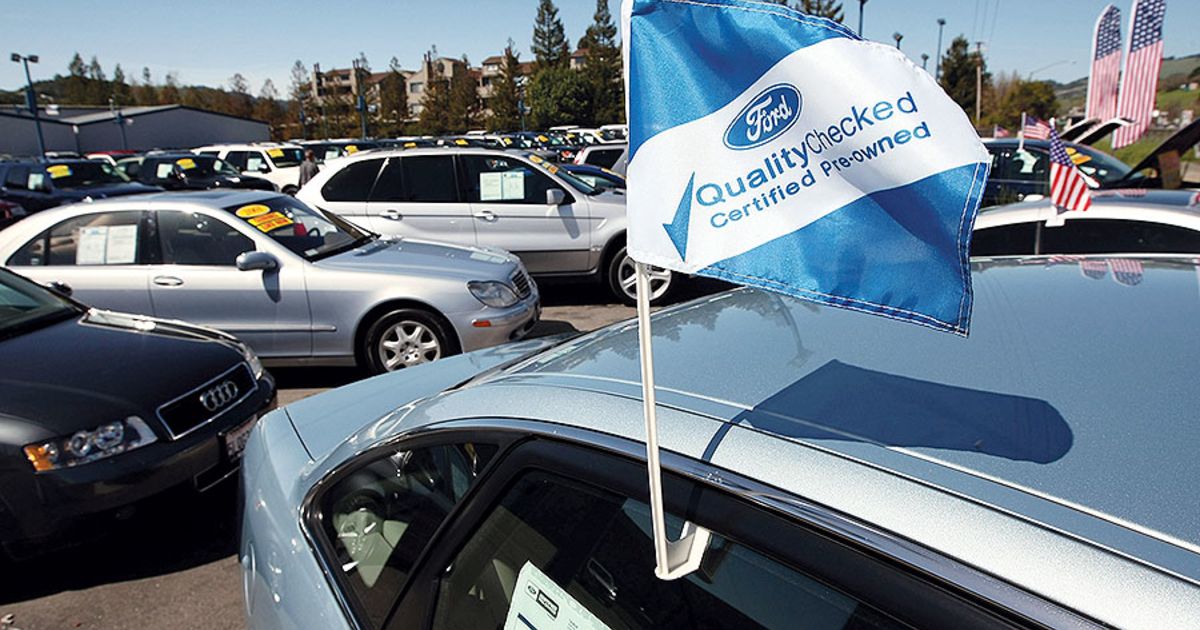
Wholesale used-vehicle prices fell as anticipated in June, signaling the start of the seasonal summer cooldown in prices.
Cox Automotive said Friday that its Manheim Used Vehicle Value Index, which tracks vehicles sold at Manheim’s U.S. auctions, fell 1.3 percent in June compared with May. The first half of 2022 was marked by cooling prices, save for May, the one month in which the index slightly increased.
Wholesale prices remained 9.7 percent higher in June than they were in the year-earlier period. Those numbers are adjusted for mix, mileage and seasonality. On a nonadjusted basis, the index fell 1.8 percent in June from its May level, with prices up 11 percent year over year.
“It is notable that the seasonal factor is now more favorable and likely will be throughout the summer months,” Cox Automotive Chief Economist Jonathan Smoke said during Manheim’s July quarterly conference call. “Prices are clearly retreating from their record highs this past winter.”
Cox Automotive expects year-over-year wholesale price increases to be less and less in the second half of 2022, possibly turning negative by November — a stark difference from fall 2021, when wholesale prices kept rising.
Cox Automotive is lowering its year-end Manheim Index forecast, which is “a recognition of where we are now, [rather] than a big change in expectations for the back half of the year,” according to Smoke. Cox Automotive’s expectation now is that the index will be down 6 percent year over year in December.
That said, Smoke doesn’t expect to see many months with major wholesale price declines through the rest of 2022.
The wholesale market is also tightening because of disruptions to volume flowing into it.
Repossessions hit a low in 2021 because of stimulus support, loan accommodations and record used-vehicle values. Though repossessions are expected to grow in 2022 — putting vehicles back into the wholesale channel — the rate will “remain well below 2019 levels,” Smoke said.
One of the biggest factors affecting wholesale volumes is a decline in off-lease vehicles flowing back into the market, Smoke said.
“Going forward, we will only see modest improvements in that by 2024 and even beyond then, we are not likely to get back to 2019 levels,” Smoke said.
Status of used-retail supply
Used retail sales rose 5 percent in June from May, according to Cox Automotive. Used retail sales in June slipped 13 percent year over year.
Cox estimated used-vehicle retail supply was at 48 days at the end of June. That’s unchanged from May but up from 39 days in June 2021. Wholesale supply ended June at 25 days, higher than 24 days in May and 20 days in June 2021.
The used-vehicle market has seen far more normalized supply conditions in 2022, Smoke said.
Used supply started the year “much higher,” Smoke said. Dealers accumulated inventory in January and February. That peaked and has been in decline. However, the pace of sales improved and retail days’ supply normalized, leaving the used-vehicle market with stable supply in June, according to Smoke.
Average wholesale prices for 3-year-old vehicles, the largest model year cohort at Manheim’s auctions, fell 2.5 percent over the last four weeks.
Black Book index
On the other hand, another indicator of wholesale pricing trends — Black Book’s Used Vehicle Retention Index — rose month to month.
The index increased to 191.5 points in June, up 2.7 points from its May level, according to data released Wednesday by Black Book. That was up 15 percent from June 2021 and 66 percent from March 2020.